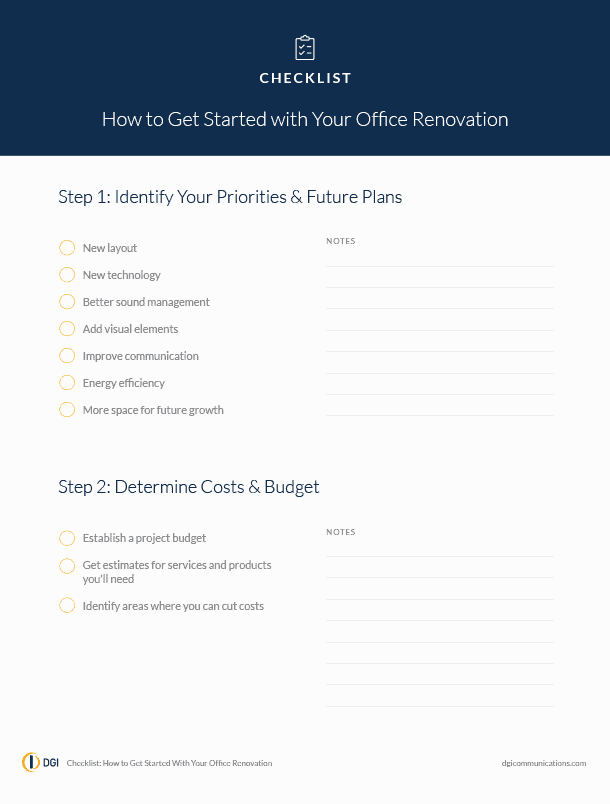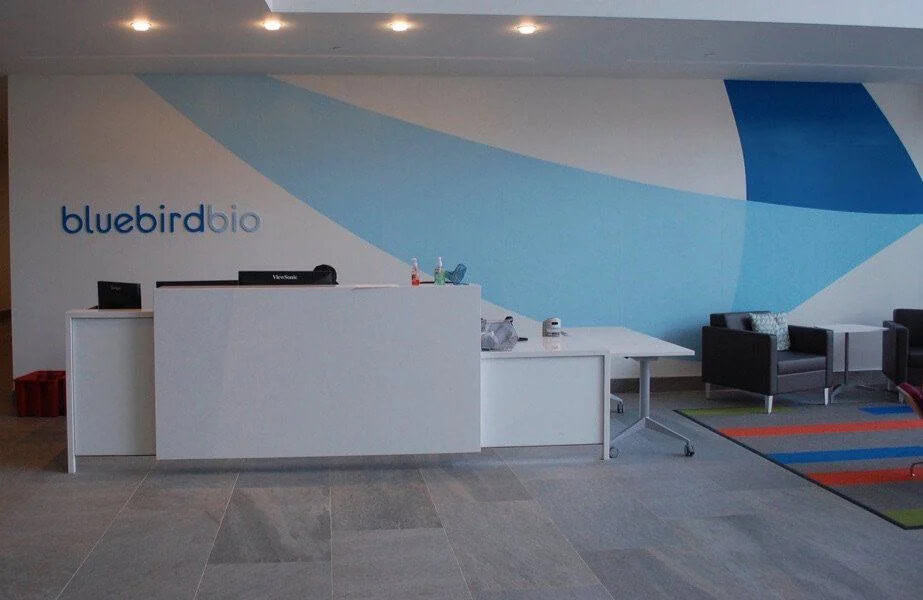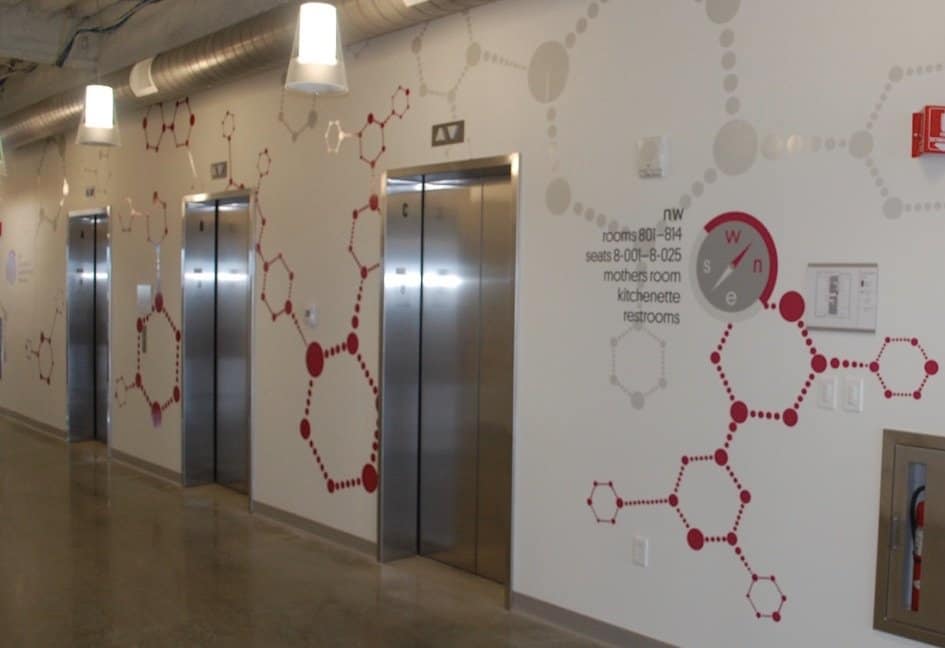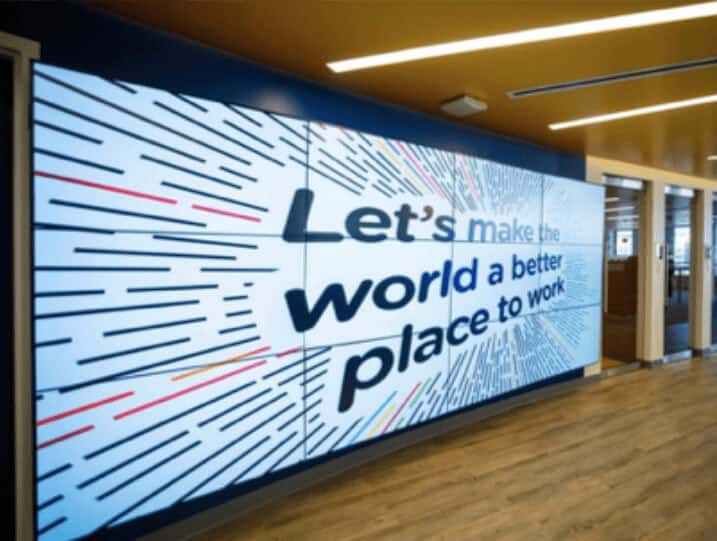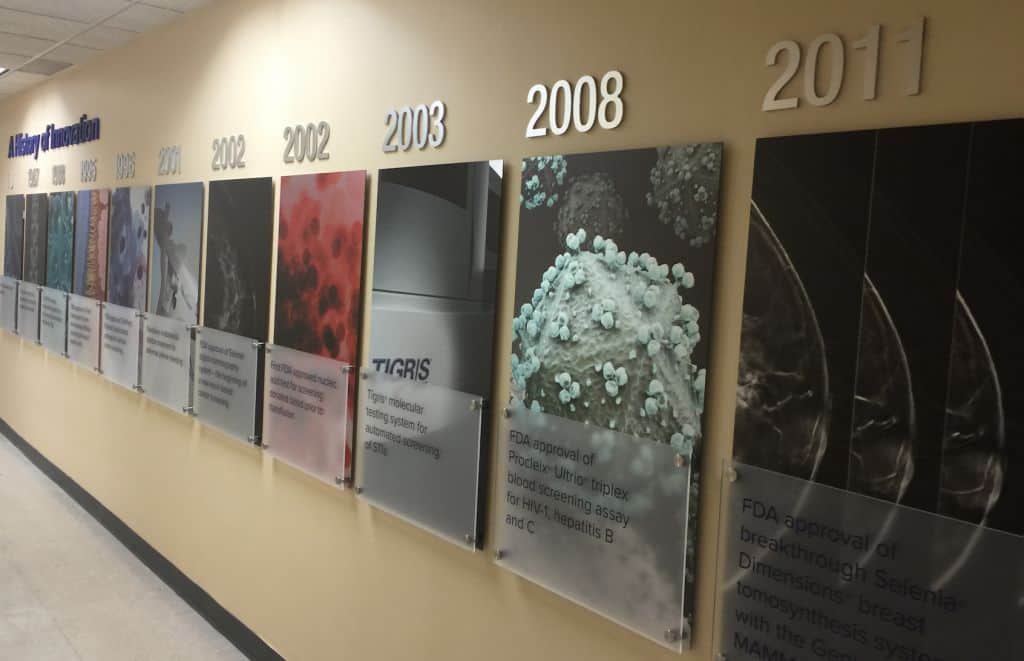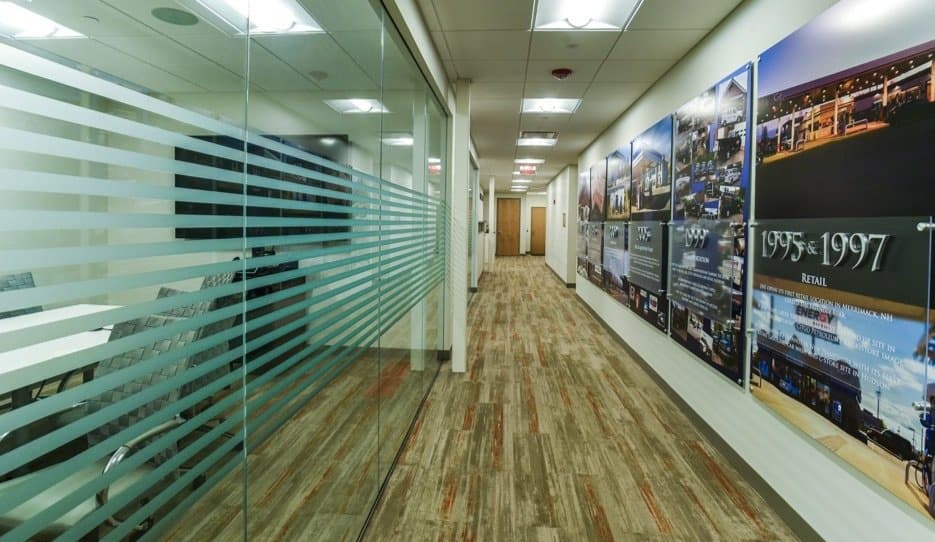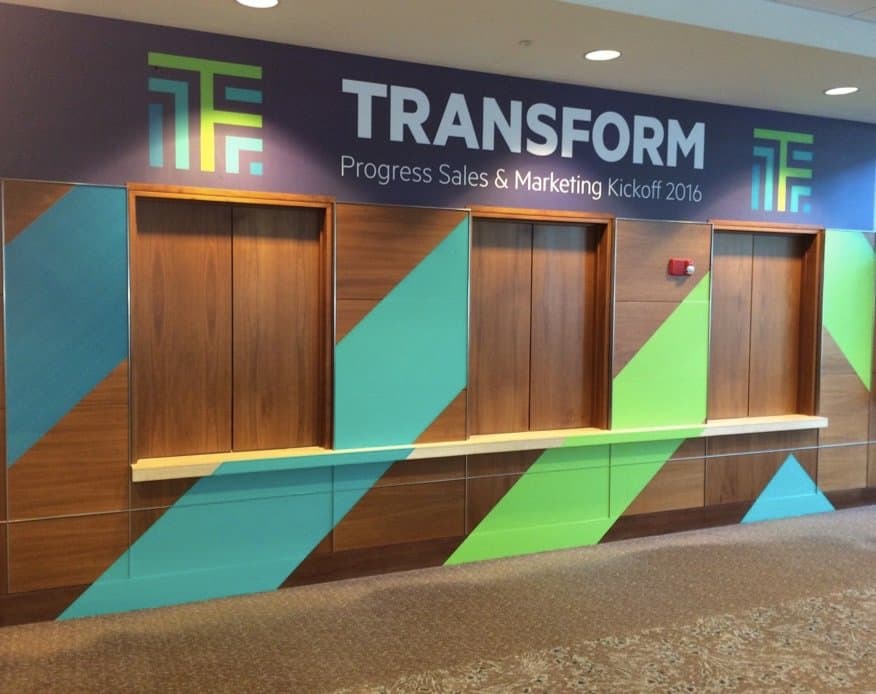Imagine walking into an office for a meeting, only to see an empty lobby and blank white walls. How would you feel? Would you think that you were in the right place? Given the minimal effort put into the environmental graphic design (EGD) of the office, you’d likely feel at least a bit uncomfortable. It’s clear that the designers of this office didn’t consider visitors’ intent and how the design would affect their experience.
From ancient Egyptian hieroglyphics lining the walls of tombs to modern-day floor-to-ceiling murals in lobbies, environmental graphic design has been prevalent all throughout history, including in schools, museums, retailers, airports and more. But exactly what is it and how can you determine the best strategy for your intended use? We explain below.
What is Environmental Graphic Design?
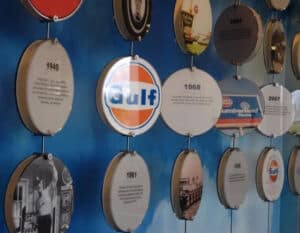
But EGD is so much more than just the layout of a room or the murals on a wall; its goal is to affect how people navigate, interact and feel when they are in a space. Everything from the color of a wall to the sound shoes make when walking on the floor can impact the environment and affect the human experience.
Some of the most popular EGD techniques used include:
- Dimensional logos and standoff displays
- Interactive displays
The Importance of Environmental Design
A recent Experience Index report from Gensler Research Institute looked at the impact of design on experience and found that “the design of physical space proves to have a significant, quantifiable impact on the quality of people’s experience.” The study surveyed more than 4,000 people across the U.S. and came up with the following stats:
- People who said that the spaces they visited were “extremely well designed” rated their experience nearly 2x higher than those who said the space was “poorly designed.”
- Respondents whose workplaces have the latest technology reported a “great experience” 3.7x more often than those whose workplaces do not have the latest technology.
- People are 10x more likely to share their experience in stores with unique design features on social media than those without.
What Makes Great Environmental Graphic Design?
Knowing the importance of environmental graphic design is one thing — but understanding the factors that go into a great design is an entirely different ball game. First, it’s important to understand a person’s intention for visiting a particular space, since this will frame their experience. Below are five different experience modes, defined by Gensler:
- Task: This intention is when a person has a goal they need to accomplish in a particular space, like conducting a meeting. People are typically very focused and not open to distractions.
- Social: The goal of the experience is to engage with others and establish a sense of community. Dining in a restaurant or hanging out at a bar are great examples.
- Discovery: Browsing through a mall or exploring a new city are ways that people show they are open to wandering and experiencing new things.
- Entertainment: People are looking to escape everyday life and experience something new and exciting in a fun environment. Going to a concert or seeing a movie are entertainment examples.
- Aspiration: People taking a class at a school or in a gym are looking to learn something new, grow or connect to a greater purpose.
Once the experience is determined, the following factors are considered to have the most significant impact on experience:
- Beauty: People’s first impression of their environment will affect how they perceive the products/services offered. Quality design that avoids excessive opulence helps create a beautiful space.
- Novelty: The “wow” factor is a great way to engage people with your space. Unique areas that have familiar functional aspects are more likely to be remembered and recommended to friends and family.
- Authenticity: Places that honor and share their history while communicating their brand and mission through design aspects are perceived to be trustworthy and genuine.
- Clarity: People need to understand their surroundings in order to feel comfortable. Clearly designed spaces will be designed to cater to people’s intuitions.
- Inspiration: Workplaces should inspire people to succeed, whether it’s the employees or visitors. Designs that broaden perspectives and showcase new ideas are often the most inspiring.
- Welcoming: People want to feel like they belong to a community. Spaces that are designed to feel inviting to a diverse range of people are consistently rated as providing great experiences.
“Spaces that are beautiful, authentic, unique, inspirational, and welcoming are most likely to engage users and stand out from the crowd.”
– Gensler Research Institute
Examples of Environmental Graphic Design
Wayfinding Systems
These systems are a helpful and seamless way to guide visitors, employees and other guests through your space. Digital maps or directories can be updated in real time, and LED wall solutions can help direct large crowds. Attractive banners, wall murals and graphic solutions can incorporate your brand, and regulatory signage can display safety notices and other important information.
Digital Signage
Digital signs, sometimes called electronic signs, refers to displays such as LED or video walls and projection and LCD monitors. You can visually and vividly display webpages, videos, menus, images and more. You can also use digital signage to display live metrics, social media feeds, webinars, trivia, the weather and important announcements or schedule changes. Digital signage is a great way to effectively and efficiently deliver information to clients, visitors or employees in a visually appealing way.
Branded Environments
Communicate your identity and create a sense of place for clients, employees and visitors. You can also incorporate custom signage, such as corporate timelines and use 3D material to create dimensional logos that will bring your name and brand to life.

Glass & Wall Graphics
Custom glass and window graphics can brand a space while also providing a level of privacy — and the customization options are endless. You can simulate the effect of etched glass, control the amount of light in your office or even add your logo. Other design options include static clings and removable adhesive vinyl, frosted glass and decorative films.
Exhibition Design
Promote your brand and message with hanging banners; self-standing displays; branded tents for outdoor exhibits; wayfinding signage; and LED-powered, high-resolution displays. You can also provide an interactive experience with opting for product demos, interactive digital signage, presentations on tablets and AV messaging, which can set you apart from other exhibitors.
Environmental Graphic Design Tips: The 3 Cs
Your space’s intended use is going to be the biggest factor in the actual design of your environment. However, the three Cs below can be applied to a variety of areas.
- Color
The psychology of color tells us that the shades we’re surrounded by can have a significant effect on our mood. For example, yellow is seen as a high-energy color that can often give off an intense vibe, while blue offers a sense of calm. So, if you’re designing a high-stress work environment, the color blue would be a better option for your base color or an accent wall. - Creativity
As mentioned above, novelty is a great way to make a lasting impression. Show off your uniqueness, whether you’re an independent retail shop or a new startup company in a big city. Internally, you should promote creative thinking with areas where employees can interact and let their minds roam free. - Collaboration
Creating a balanced space will help people better connect, depending on the intended use, of course. If you’re designing a large corporate office, your employees will likely need their own space to work as well as areas that promote collaboration. You can cater to both these needs by using environmental graphic design to promote productivity and engagement.
This is really just the tip of the iceberg when it comes to an EGD strategy. But more than anything, the human experience should be the driving force behind your design.
For more information or to inquire about a project in your space, contact DGI.
![What is Environmental Graphic Design? [Examples & Tips]](https://www.dgicommunications.com/wp-content/uploads/2020/04/dgi-environmental-graphic-design.jpg)
